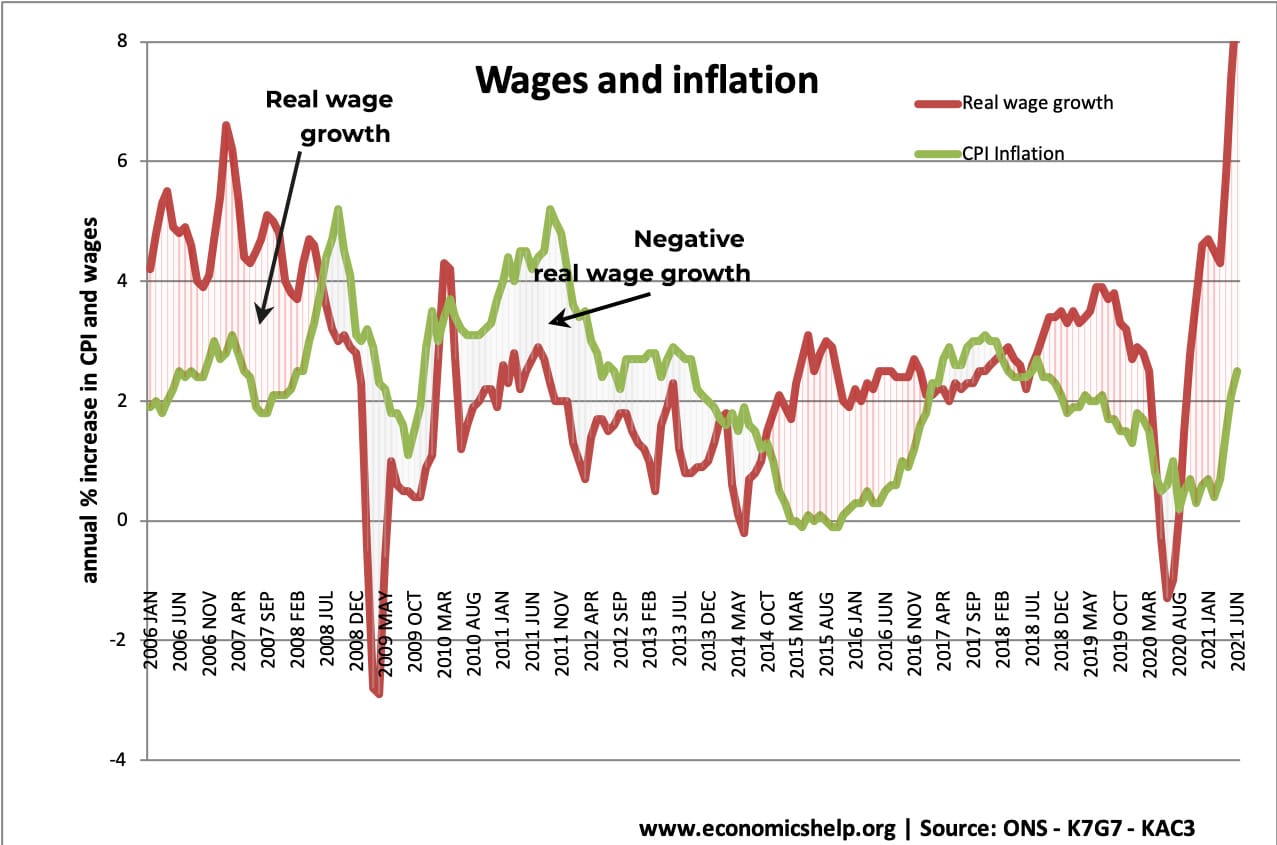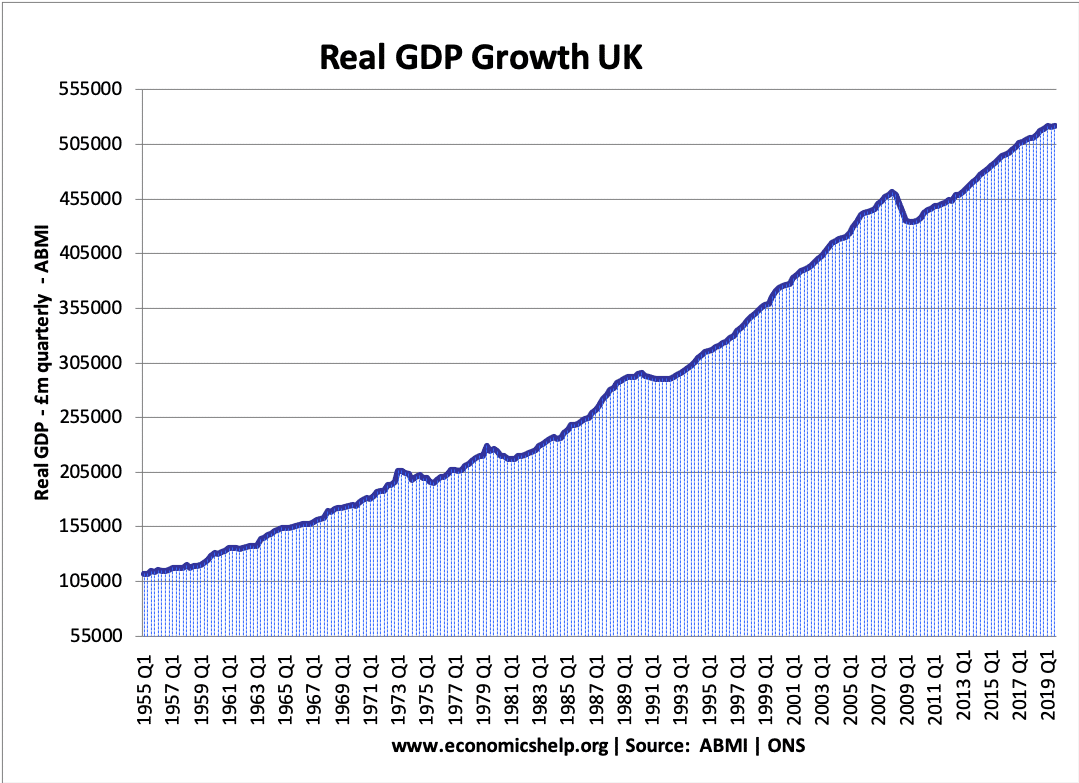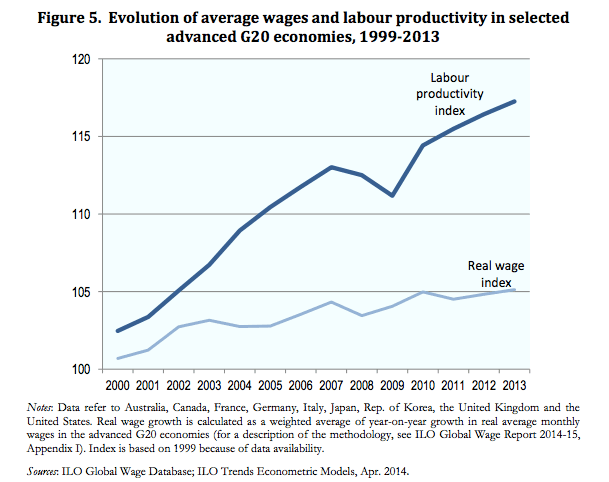A high wage economy is characterised by high average incomes, rising real wages and fair distribution of income so the lowest income deciles are well paid.
In summary, high wage economies tend to be characterised by high economic growth, rising labour productivity, high levels of education and training and good labour protections. (e.g. trade unions and minimum wages)
To create a high wage economy, a government could:
- Invest in improved infrastructure
- Try subsidise development of new technology
- Invest in improved education and training.
- Fiscal/monetary policy to ensure strong and stable economic growth.
- Ensure fair balance between workers and companies – high minimum wages and strong trade unions.
Some claim cutting immigration can be a way to push up wages, though this is open to debate.
Video summary
More detail on creating a high wage economy
Productivity In economic theory, demand for labour depends on marginal revenue product of labour (MRP). This is productivity x Marginal revenue (MR) of last good sold. Therefore, high wages depend upon a high MRP, which could involve both high productivity and high demand for the good. Countries with high productivity growth, typically see rising real wages. As workers produce more per hour, firms are able to pay more because each worker is bringing in more revenue. When productivity slows down, so does wage growth.
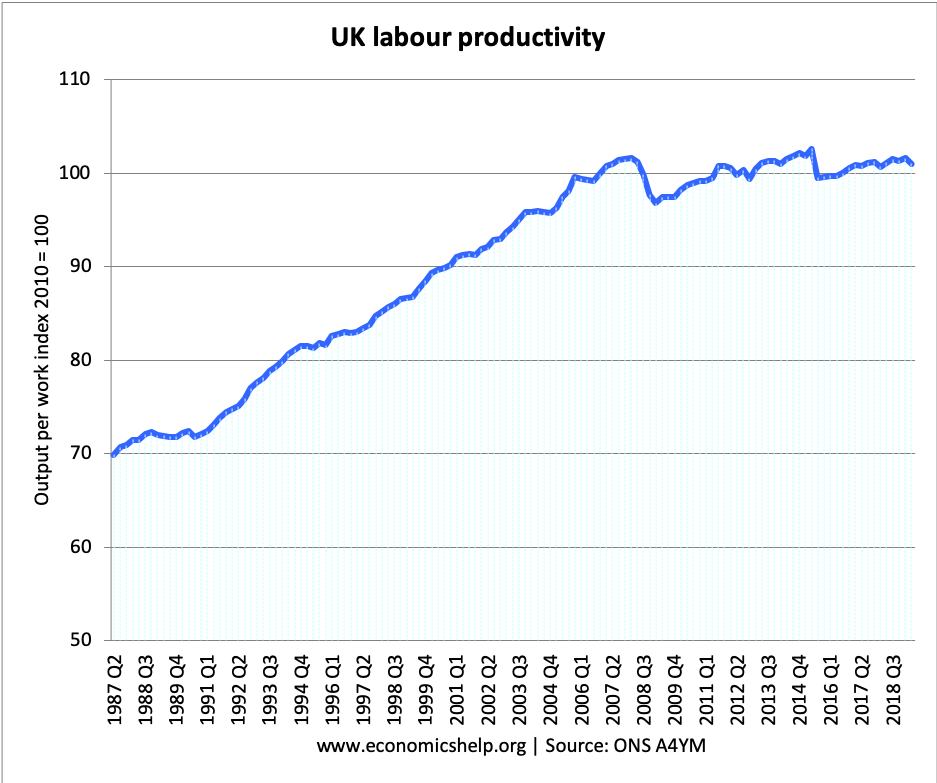
Between 2008, and 2020 real wage growth in the UK has been relatively stagnant.
Given the importance of labour productivity, a key question is how to increase labour productivity? To a large extent, productivity is driven by factors behind the government’s direct control. Productivity growth depends upon:
- Technological innovation – new inventions and technologies which enable greater productivity, e.g. micro-computers enabled much manual work to be replaced by automated systems and fewer workers.
- Development of new working practises (better union relations), incentives to work hard.
- Development of new logistic practises (e.g. just in time management)
- General skills and training of workforce.
There are some areas where the government could attempt to increase productivity
- More spending on education and training, in particular efforts to increase vocational training and meet supply shortages, e.g. train more HGV lorry drivers to avoid shortage of deliveries.
- More spending on infrastructure, e.g. more spending on new roads and railways to enable lower transport costs and cheaper delivery of goods.
- Privatisation and deregulation. The supply-side policy of selling state-owned assets to the private sector could lead to some efficiency gains, though evidence from UK privatisation is mixed with no major breakthrough in productivity and wages. See privatisation
- Higher minimum wages. Higher wages increase costs for firms and so there is a greater incentive to try and increase labour productivity by investing in more technology which replaces some labour costs.
Economic growth
The strongest factor for determining wages is economic growth and real GDP per capita. Real GDP per capita is the level of a countries national income per person. If national income per capita rises, then ceteris paribus, you would expect a rise in wages too.
If a country had an increase in real GDP of 2%, but population grew by 2%, then real wages would likely remain unaffected.
See also: Relationship between economic growth and real wages
In the post-war boom, we see both rising real GDP, and rising real GDP per capita – this was a period of strong wage growth across the industrialised world.
The role of immigration in creating high wage economy
The role of immigration in wages is often controversial because of its political nature. It is worth bearing in mind high levels of immigration can be consistent with both rising wages and stagnant wages, it can be hard to isolate particular factors. For example, in the post-war period, UK, the US and Europe experienced large rises in immigration yet this was consistent with rising real wages. The supply of labour increased, but also immigration caused a rise in demand for labour. The immigration also helped avoid labour shortages, encouraged firms to invest and was a factor in high economic growth..
The US population has increased dramatically since the mid-nineteenth century – its population growth has been largely driven by immigration, yet this hasn’t stopped the US become one of the highest average wage economies.
In the same post-war period, Japan experienced even more rapid wage growth, with hardly any immigration. The key factor behind wage growth in Japan was strong economic growth, rising productivity and good labour relations, which saw workers take an increasing share of GDP.
In 2021, the UK has experienced labour shortages partly as a result of a dramatic fall in immigration since Brexit. In the last few months of 2021, real wages have shown strong growth. This could be seen as evidence that falls in immigration can lead to higher wages. However, it is too early to make a definitive claim – wage growth is often volatile and it is important to look at wage trends over a period of time.
Acute labour shortages and high wage economy
Certainly, if there are acute labour shortages, you are likely to see a rise in wages in that particular industry, however, this is not a good way to get a high wage economy. The acute labour shortages also lead to higher prices and lower output and uncertainty. These are the kind of things that in the long-term will hold back productivity and economic growth – the two most important long-term trends in real wages.
See more on link between immigration and real wages
The role of trade unions and monopsony
Whilst we have emphasised the importance of productivity in determining wages. The link isn’t absolute. One feature of the past couple of decades is real wages increasing less than labour productivity. One factor is the increased monopsony power of some employers. The modern economy is seeing a shift to big tech firms – like Apple, Google, Amazon Microsoft and Facebook. These firms are very profitable because of their monopoly power. Improved productivity doesn’t necessarily translate into higher wages. Of course, there are other possible explanations for the delinking of productivity and real wages
UK Labour share of income
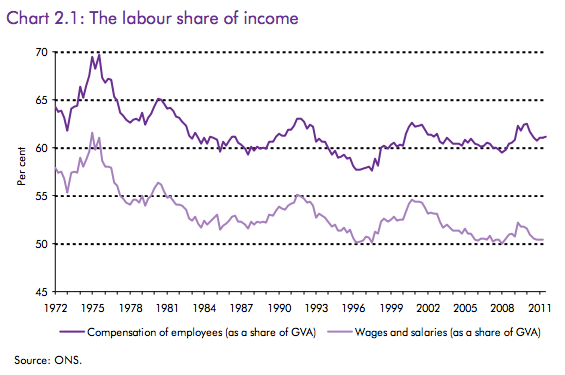
A high wage economy is dependent on the inter-relation between firms and workers. In the UK an increasing number of people are reliant on the minimum wage and so this is important for determining many wages.
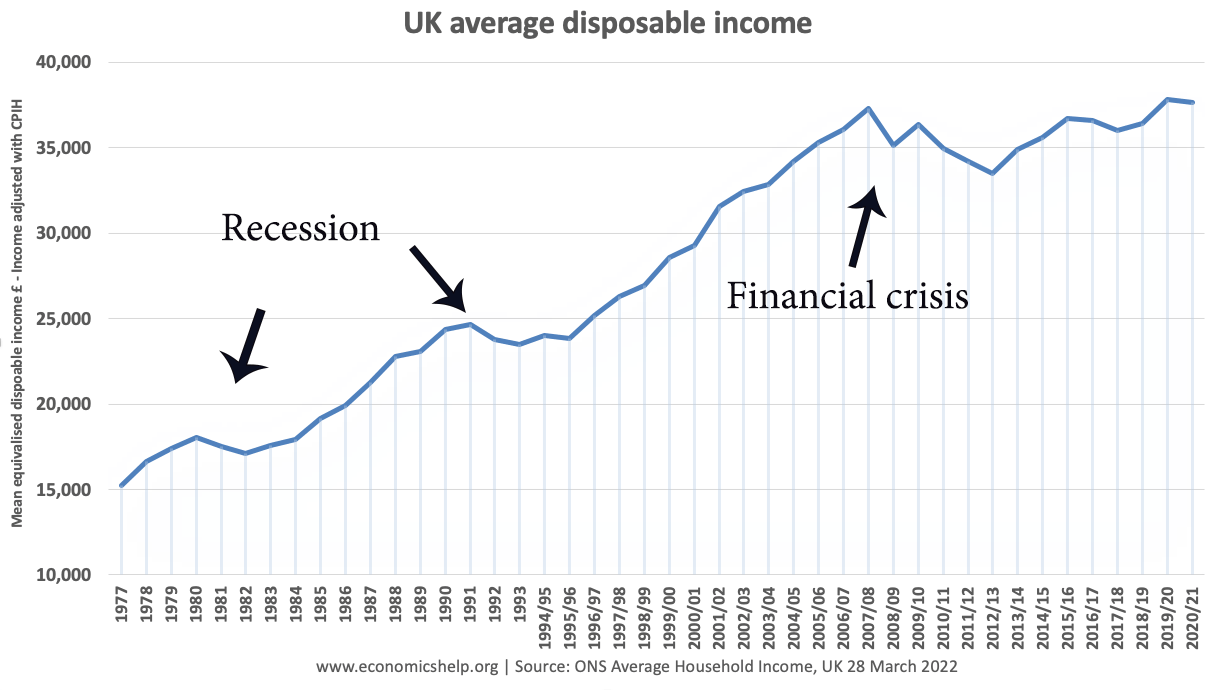
Limited real income growth since 2009.
In 2007/08 real median disposable income was £37,310. By 2020/21 that was only a very small increase of £37,622 or less than 1% growth over 13 years.
Related

